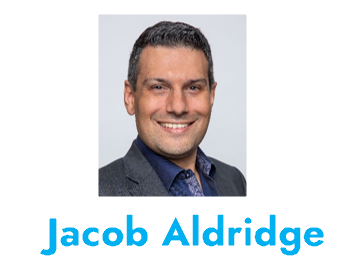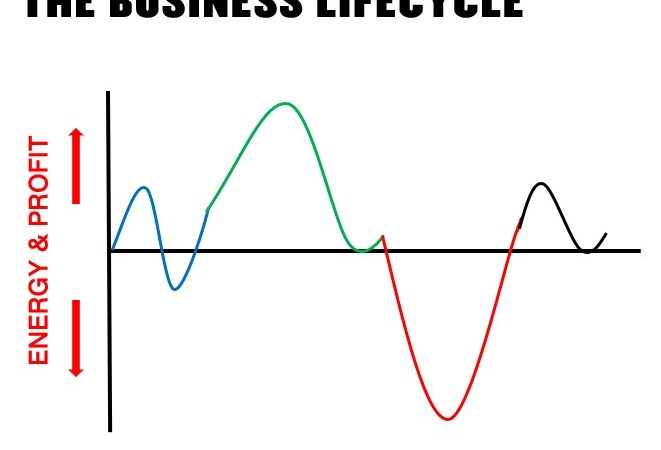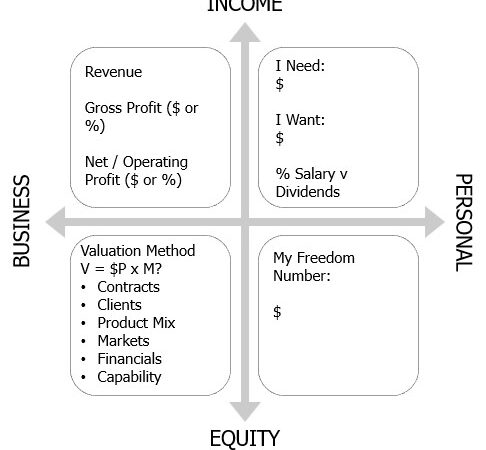A recession or economic downturn typically pushes a management team’s focus into becoming very micro (budgets, staffing, banks, costs, refinancing, saving money). If you’re not having a macro conversation right now, you’ll be disconnecting from your business vision – one of the reasons I have said previously that every business needs a counter-cyclical recession response.
The worst consequence of this isn’t during the downturn. The biggest problem is that if you’re not connected to your vision (at any time) then your staff will almost certainly be feeling rather lost and detached, and your business will move into the next boom in that way.
A way to reconnect
Remember why you started the business? Remember why you come to work each day?
The easiest way to connect with your original vision is to rediscover your business history. It is described as a “camp fire” conversation. We ask each other, “What’s the history of this business? Back then, what were we trying to achieve?”
The key word in this history conversation is perspective. The danger of trying to reconnect with your vision straight from a recession is taking the recession’s negativity forward into your future. As a result, the re-set vision will be too small. It won’t fully accommodate company traditions, culture or values because it’s still connected to lots of angst, anxiety and anger.
If you try to build a future vision, but unwittingly include the recession’s negatives, it won’t be connected to your original business intent. You’ll miss out the perspective of where you originally began.
Document your history
We’ve been advising clients to document their business journey, moment by moment, and reconnect back to those many instances. People normally begin by saying, “On day one we did X, Y and Z.” But they must go back before day one because this is not when most businesses actually begin. In some cases, people spend years planning their business before launching and it’s rarely an instantaneous start-up. They may have frustrations from working for someone else, or spot a market opportunity and spend time in research. Recognising your early history as part of the total business journey is vital.
Having a camp fire conversation with business partners doesn’t need a facilitator or coach. It’s something people can easily do themselves.
Here are some questions to get started.
- How did this business start?
- Why did we launch originally – only commercial gain or did we have a cultural aim too?
- What were we trying to achieve?
- What were we hoping to do?
Why I love coaching
One of my early clients was a fence builder. On our first appointment I asked, “What do you want me to do for you? What help do you need?” He replied, “I bought this business ten years ago when I left the army. I knew I was buying myself a job, and that’s OK, so I’ve spent the last decade making sure we became the best fencing business in the state. Which we now are.”
At that point I was left wondering what I could possibly do for him. Did he want to sell? Did he need to be the best fencing business in the world?
He said he’d been talking with his wife recently, who also worked in the business, and they realised they hadn’t had a proper holiday in years. In fact, the last extended vacation the took was just before they bought the business!
He realised he’d spent the last ten years working hard to build his business, to make life easier, and to grow his income successfully. But the cost had been not spending time with his family. Remember the old fable? On the day you die, your gravestone probably won’t say, “I wish I’d spent more time at work.”
My client gave me his brief, “I don’t need to earn more money. Just make sure I get to take more holidays.”
I said, “Wow! What a great brief.” That’s the reason I fell in love with coaching – it’s such a great job. (I mean, it would have been nicer if they had taken me on their boat trip around Thailand six months later, but I guess someone had to run the sales meetings while they were away!)
Not just the money
Gaining perspective takes us back to the question of why we got into business originally – and it’s rarely just the money.
When you reconnect to your own history, you’ll remember why you first set the business up.
A Camp Fire Example
Most readers know that I was trained as part of Shirlaws Group, and worked closely with their global product development team through the Great Recession on how to best help SME businesses to respond and grow.
At that time, the founders of Shirlaws sat down and wrote their Camp Fire history. One of the great cultural experience of my professional life was the 2011 Shirlaws Global Conference in Boston, MA, where almost 100 coaches came together to celebrate that history and look to the future.
If you want an example of a Camp Fire History, or would like to know the Shirlaws story, you can read it further below. I will also work on documenting my own Jacob Aldridge camp fire history, since the growing team around me has made that relevant.
Get your team round the camp fire
For other businesses, the management team needs to get together around their own camp fire. Get the vision conversation going. Reconnect and discover where you’re up to and how to direct the conversation towards the future. With perspective, people will say, “Yes, let’s talk about this.”
Without the whole business history, and without the perspective it brings, people may have a vision conversation that could go anywhere. It won’t necessarily be connected to your business journey, but be influenced by the recession.
What’s important is to return to the foundation stone you laid. Go back to first principles by taking a historical perspective.
When you laid your foundation stone, what did you write on it?
The Shirlaws Story – 1994-2010
by Darren Shirlaw
In 2010, Darren published an article called ‘Reconnecting your business vision‘ which encouraged business owners, CEOs, and managers to revisit the reason they started their business and to share the journey with the team – as a key exercise for releasing any recession-era baggage before moving forward.
As an example, he also shared the Shirlaws story, which we are proud to reproduce.
The Shirlaws story: research and development
December 1994 to July 1999
Every business has its own timeframe and I’d like to use the Shirlaws history as an example of perspective.
I encourage clients to have a similar perspective conversation to highlight exactly what happened in the past – including pre-launch. Most people in an organisation won’t know exactly what happened then and therefore their perspective isn’t the same as the business founder’s.
Most people think Shirlaws’ history started on 16 July 1999. In fact it started on Sunday 4 December 1994, some five years earlier, when I first had the idea of setting up business. During this period I worked hard to research the market. I interviewed more than 700 businesses to discover what problems they had, what help they needed and where they found it. I also interviewed people in the coaching and training industry to explore their business models – what worked and what didn’t.
Armed with that information, and after five years of solid work, I understood what people really wanted from coaching. I could also design a scalable coaching business. After five years, that intellectual property (IP) became the core of what we’re now delivering 11 years later and is the foundation on which our business is built. For any business, the work done in these pre-launch days is what lays the business foundation.
In the first meeting with my business partners, I told them it takes six minutes to copy IP, six months to copy a system and six years to copy a culture. “I want to build an amazing culture – and that will be our competitive advantage.” In setting down our platform 11 years ago in 1999, we laid the foundation stone on which everything else is built.
In the same way, each business owner needs to map out what’s relevant to them. For example, never wanting to work for anyone else was one of my core drivers in setting up this business. I always wanted independence and therefore our business infrastructure encourages entrepreneurial spirit in everyone. What are your foundation cornerstones that you can share with your team?
The Shirlaws story: proof of concept and platform development
1999-2003
By 1999 I had a concept, but needed to prove its validity and commercial potential. The next four years of our business therefore were all about proof of concept.
By 2003 we had built the business in one country and our revenue had risen from $0 to $6m. We had won two national awards, one of which as the seventh fastest growing organisation in that country. We arrived at 2003 and could say, “This is working. And so what’s next?”
As soon as you ask the “What’s next?” question you’re technically going into another phase.
In perspective, by 2003, I’d been working in this business nine years. Some people joining in 2001 or 2002 had only been working in the business one or two years. We were all part of the business, but in perspective terms I had nine years versus one or two years.
My nine included five years of research, development and IP – not to mention having all my own money at stake ($1m at the time). Then four years of working seven days a week to get the first country set up.
A significant milestone. 1999-2003 was also a product building phase. We had to invest in developing it and proving to our clients that it worked. We weren’t trying to sell and market it to everybody – it was very much a platform/product phase.
The Shirlaws story: internationalisation
2003-2006
In 2003 we moved overseas because we wanted to prove the concept in Australia would work in other countries – prove internationalisation. From 2003-2006 we invested heavily in setting up two overseas hubs, one in London and one in San Francisco, to demonstrate the Shirlaws business could go global.
Most of this time we invested money in our platform, getting those two hubs bedded down. We recruited, trained and developed people and put systems into those countries.
Along the way we changed our brand to become international. We invested well over £200,000 building an international brand complete with logos and fully documented products.
The American market told us our language didn’t work in the US, so we had to re-draft our documents to work better in that country, and so we have had to replicate that experience in each new country (Spain, Japan, Middle East and so on).
In 2006 we sat back with the UK and the US and said, “Our company is now built and we’ve proved it works. We’ve demonstrated it in other countries and have the product platform in place.” To have developed business coaching was a major milestone for us. At that point, we agreed to hand the business over to a management team and let them run it.
In perspective, by 2006, the guys starting in 1999 were up to the seven-year mark, but I was up to my 12-year mark.
The Shirlaws story: major new product development
2006-2009
From 2006-2009 we exited the Shirlaws business from a managerial position and began developing even more product for the coaching industry. Let’s return to the 1999 vision. The stone we laid down then had two key things written on it.
- We will be an international company
- We will be a coaching industry player, (i.e. not just business coaching).
This vision meant that, at some point after building the business coaching brand, we’d need to develop the other brands. We knew we couldn’t offer Life, Executive and Leadership coaching under the same umbrella brand as business coaching. Apart from these four distinct brands, we also needed four different types of IP to offer into the four markets, which we developed during this three-year period.
Our perspective sitting around the campfire in 2009 was now a business 10 years in operation (1999-2009). We’d developed the product for Shirlaws business coaching, proved it in one country, proved it internationally and now invested in product for three more brands. This meant we could play across the whole industry.
Looking back with perspective at the 10-year mark, we had really invested hard in product. Along that journey, when anyone asked, “Can we invest more in marketing?” We said, “No.” “Can we invest more money in sales?” Again we’d say, “No.”
“How about a database management system linked to sales?” “No.” We kept repeating that we’d only invest in product until we had built the whole organisation.
The Shirlaws story: sales and marketing
2010 onwards
The campfire conversation of 2009 led to new questions. “What to do next? How to grow the business now all the products are built?” The simple answer was, “Switch to sales and marketing.” In perspective, the first 10 years have all been about product and the next 10 years will all be about sales and marketing 2009 to 2019.
Armed with perspective, people understand the journey. This isn’t just those who didn’t know the history, but includes people who’ve been around since 1999. They too can come up for a breath of fresh air saying, “Yes, now I know what we’re doing and remember why we’re doing it. I feel reconnected to why we’re in business. Now I feel re-energised and want to keep going.”
2010 is about putting down the platform for sales and marketing, which includes two key initiatives we’ve already launched this year.
- Moving into the online space with the sole purpose of bringing in more work via online activity
- Moving into the fund and advisory space because many small business clients want access to funds.
Several have approached us in the past to say they need funding to get their business going and can’t buy coaching until they’ve secured the investment. Previously we’ve said come back once you have the funding and we haven’t been part of that solution. Now we can help people raise funding and as part of that, we can offer coaching
We’re now one year into a 10-year programme of sales and marketing. We have a massive platform and we’re ready to fill it up.
That will be some achievement.




